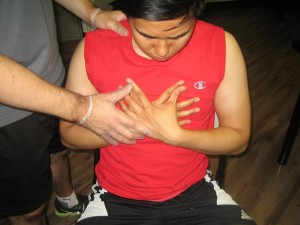Most allergies are triggered by a reaction to a particular protein. On the other hand smoke allergy is also quite common. In most cases, smoke allergy can manifest through symptoms that are similar to other common allergies such as allergies to pet dander and pollen. For those who are in doubt, it is best to consult a doctor so that tests will be carried out to accurately diagnose a smoke allergy.
How to spot smoke allergy symptoms
You have to take note if the individual will rub his/her eyes often, experiences itchy sensation that is accompanied by watery eyes, it clearly indicates that he/she has smoke allergy. The tobacco that is present in the air can also cause irritation to sensitive eyes.
Observe for excessive sneezing. Since smoke is very annoying to the nasal passages, thus sneezing is considered as one of the common indications of smoke allergy that you have to watch out for.
If there is chronic cough, it is a possible symptom of a smoke allergy. Once the smoke enters the lungs upon breathing, it triggers a reaction in the bronchial tubes and air sacs in the lungs. The body will attempt to expel it by coughing.
It is also important to be cautious for shortness of breath due to exposure to smoke. Shortness of breath is considered as a serious issue and it is important to consult a doctor immediately. If the individual has asthma, it can lead to life-threatening breathing problems if exposed to smoke.

Instruct the individual to breath while you listen carefully to the breathing. Wheezing can indicate a problem with the lungs and commonly linked with smoke allergies. If headache occurs, it is also a possible symptom of smoke allergy. On the other hand, it is best to consult a doctor to determine if it is connected to the allergy since headache has many causes.
Undergo testing for smoke allergy
The individual must set an appointment with a doctor if any of the allergy symptoms stated are observed. The allergy tests are performed before the appropriate treatment is provided.
During an allergy skin test, the doctor will prick the skin and a small amount of the suspected allergy is applied or injected beneath it to check if an allergic reaction is triggered. A blood test is also carried out in order to check for antibodies in the bloodstream. Take note that the blood allergy tests are not as popular as the skin tests. On the other hand, due to the high accuracy of the results they provided, it might be required if the doctor has any doubts regarding the exact origin of the symptoms triggered by the allergy.
If any family member has allergies, whether to certain food or materials, it is vital that you are prepared in case an allergic reaction develops. By enrolling in a first aid class, you will learn the basics on how to deal with allergies and the measures to perform.
